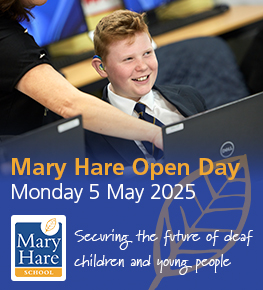Tips to support online teaching and learning
Split screen
These links help to show how to split the screen
- Split Screen Teams Call Trick – YouTube – member’s advice ‘do the set up first, then activate Teams with the Teams camera option ‘off'”
- https://www.youtube.com/watch?v=rKDKniBmwe0&feature=youtu.be
- https://youtu.be/AMM80BnIgU8
- https://mobile.twitter.com/eustace_stephen/status/1311642548495147008
Speech to text
Speech to text readiness checklist (from success for kids with hearing loss website)
Live translate app (for android phone) A speech to text tool to aid conversations for some learners – recommended by Madeline Hickey, Specialist Lead-Sensory, National Council for Special Education (NCSE) (Republic of Ireland). It worked well with the Southern Irish accent!
Captioning ideas
https://tinachildressaud.com/category/information-and-resources/captioning/
MS Office Teams tools
Microsoft has a Education section linked to hearing access needs
Reflect in Teams – Help students recognise and navigate their emotions by providing regular opportunities to share and be heard. Reflect can help broaden learners’ emotional vocabulary and deepen empathy for their peers while also providing valuable feedback to educators for a healthy classroom community.
Reading Progress in Teams – Support and track reading fluency. Students record their reading on camera and submit it to you. Data is automatically collected and organised in Insights. Similar to a miscue analysis.
Split Screen Teams Call Trick – YouTube – Top tip – do the set up first, then activate Teams with the Teams camera option ‘off”
Noise compression feature on Microsoft teams
Reduce background noise in Microsoft Teams meetings with Noise Suppression
How to use Live Captions in Microsoft Teams
How to use PowerPoint captions and subtitles
How to use OneNote Live Captions
Communicate with non-native language speaking parents using free tools from Microsoft
Microsoft Accessibility: to support teachers with hearing loss or additional needs in improving accessibility on platforms such as Microsoft Teams etc.
Pixel and Live Caption
Pixel transcribing audio: https://support.google.com/accessibil… *English only. The media material notes “available only on Pixel 2 or newer phones and select other Android phones. Accuracy of Live Caption depends on the quality and clarity of the audio source. Not applicable to music and not available on all media apps. See https://g.co/help/livecaption.”
Chrome captioning update
Google have updated Google Chrome features to be more inclusive with accessibility for captioning purposes using live captions. https://blog.google/products/chrome/live-caption-chrome/
Craig Mill from CALL Scotland created this useful video
Google for Education webinar
BATOD Scotland Vice Chair, QToD, Amanda Mc Namara, co-delivered a Google for Education webinar ‘Accessibility for Teachers of Learners with Deafness’
Google for Education Accessibility One Pager pdf.
Accessibility Tools ( wider overview with links to tools and resources to support all learners) – presentation deck
A product by product guide to the specific features, both for accessibility and more general features that can support learners.
flashcards (Always well received)
Powerpoint
‘Tutorial – How to create a video with signed captions in powerpoint‘ and ‘How to add hyperlinks in Microsoft Office and create PDFs‘ created by BATOD North member, Ryan)
Apple
May 2021 the new SignTime service was launched. It connects Apple Store and Apple Support customers with on-demand sign language interpreters. Read more about this and other accessibility updates here
You can use dictation instead of your keyboard to enter text with many apps and features that use the keyboard on your iPhone, iPad or iPod touch.




